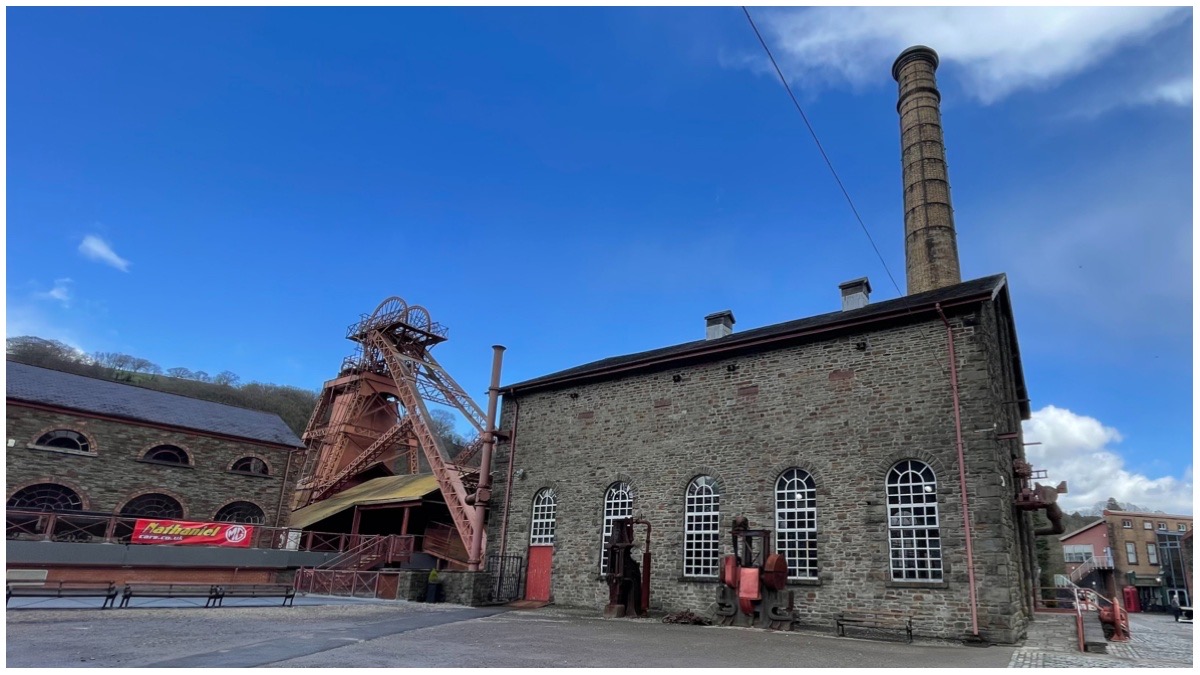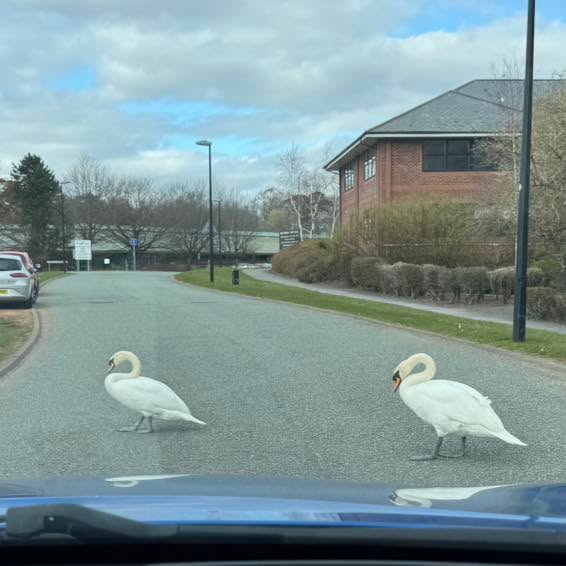On the way home from a trip to South Wales I stopped at the Rhondda Heritage Centre. I had been advised to visit A Welsh Coal Mining Experience and even though it wasn’t on my South Wales Bucket List, I was not disappointed. The Rhondda Heritage Centre can be found at the site of the old Lewis Merthyr Colliery in Trehafod down in the Rhondda Valley.
Lewis Merthyr Colliery – A Brief History

A Welsh Coal Mining Experience is situated on the site of the old Lewis Merthyr Colliery. The colliery was established by W T Lewis (Lord Merthyr) in the mid 1870s and operated until 1983.
The colliery operated via two shafts – the Bertie shaft (sunk in 1880) and Trefor shaft (sunk in 1890). Both shafts were named after the Lord’s sons. It is said that the colliery was one of the deepest in Wales at a depth of over 1300 feet (for context, the Empire State Building is approx 1250 feet high).
A few years after the colliery closed, the local council took over the site and created what is now known as the Rhondda Heritage Park with the Welsh Coal Mining Experience on site.
Modern Day Heritage Centre

Today some of the buildings have been converted into a visitor centre with a shop, a chocolate shop, craft shop, cafe and museum. Caffe Bracchi serves delicious food and the shop offers souveniers to take home with you. On the first floor the Museum houses a permanent exhibition about the history of the coal industry (the “black gold”) as well as temporary exhibitions which change every couple of months. The day we visited there was a fascinating exhibition about the South Wales coal industry’s connection to the Titanic. According to the exhibitions panels, the coal from the Lewis Merthyr Colliery was part of the fuel which fuelled the Titanic.

In the yard outside are some of the bits from the colliery’s working days. I obviously found an engine! But the main thing that caught my attention was the dram full of coal – the last to be raised from the Ty Mawr colliery in 1983. I find something incredibly sad about seeing that. Remnants of a lost industry. However sad I feel about that, you cannot forget the tragedy the industry has seen with the various disasters. The most famous of which was of course Aberfan where 144 lives were lost (28 adults and 116 children) after a coal tip collapsed and engulfed the village school. If by any chance you haven’t heard about Aberfan, then I suggest you take a read of the Wikipedia page. At Rhondda Heritage Centre is a commemorative piece made by Nathan Wyburn. The sculpture is made of 144 clocks (one for each life lost) and each set at 9.13am (the time of the disaster).

In addition to the Aberfan sculpture there is also a Davy Lamp outside which was erected to commemorate all the lives lost in the South Wales coalfield but specifically the lives lost at the Lewis Merthyr Colliery in November 1956. Very poignant pieces at the Centre.
A Welsh Coal Mining Experience – Underground Tour

Highlight of the visit was of course the underground tour. We had an excellent guide named Peter. I was fascinated hearing about his story of working in the mines. He had worked in the South Wales coalfield for 33 years during which he worked at 6 different collieries. There’s nothing he doesn’t know about South Wales coal mines (and in his words, if he doesn’t know he’ll make it up!).
We were taking to see the yard outside before being taken into the engine room. Here we were greeted by a video clip of a Cornishman who was telling us his story of moving to South Wales to tend the machines before falling in love with a local and staying here. The steam engine we saw was the winding engine for the pits. It brough the cages of men and coal up and down the pit shafts. According to Peter, the speed at which the cage travelled down the shafts was incredible – reaching speeds of something like 40 mph! Just imagining travelling to work in a lift doing that speed! Peter did mention that some miners would suffer with travel sickness after travelling in the cages.

After seeing the engine in operation we headed on to the kit room. Here Peter explained about what the miners had to take down to the pit. He explained how for each shift a miner would take his it was out turn to go down to Pit Bottom in a cage. Our group were crammed into the cage and sent on our way. Thankfully, the shaft isn’t as deep as it was back in the day and we did not travel at 40 mph! At Pit Bottom we were taken around the tunnels by Peter until we came across another interactive video.
This time it was of Joseph Keating a 12 year old boy who was telling us about his first day in the mine. Children as young as 4 have been recorded as being working in the mines but thanks to the Coal Mines Regulation Act of 1860 the minimum age limit for children to start work was raised to 12. So it seems Jospeh was post 1860. He worked with the pit ponies and was telling us about their work and how he had got into trouble when the pony had bolted and caused a coal drum to tip over. One thing that struck me listening to Joseph is the pride he felt being able to go to work with his father and the other miners. Whilst it was a horrible and dirty job, that’s one thing I’ve found listening to any miners recount their story, is that they were proud workers. It makes me sad to think that all of these jobs have now disappeared and the South Wales Valleys have lost the industry that made them world famous. It’s a similar story to the Welsh slate industry here in North Wales.

Anyway I digress… back to the tour! After listening to Joseph we carried on down the tunnels where we came to a dead end. Here Peter explained how he was the shift manager and part of his job was to deal with the dynamite and connecting all the detonators. He explained the health and safety aspect of it including checking for methane before sending the men on shift back down the tunnel. Once everyone was at a safe distance, he would set the detonator off to open the next bit of tunnel.
During our visit, Peter gave the detonator switch to a young lad in our group and when he pushed it, there was an almighty bang and the ground shook! It was of course just a simulation of what it would’ve been like underground. Although it was nowhere near as loud as it would’ve been had it been real dynamite!After that we headed on up through the tunnels and found our way to the “Dram!” experience. We were all loaded into a coal wagon (a “dram”) and virtually raced our way back to the surface.
It was such a fabulous tour and all three of us enjoyed it. Peter was a fantastic guide and made it an engaging experience for the children whilst keeping it informative for us adults. I would highly recommend visiting the Rhondda Heritage Centre – a grand day out!
How To Find & Pricing
A Welsh Coal Mining Experience, Rhondda Heritage Centre, Trehafod, CF37 2NP / Website / Facebook / Twitter
Exhibition and Museum is free / Underground Tour was £9.95 per adult and £6.75 per child (family ticket option available too).




























































































Pingback: Thoughts About Coal - Becster.com